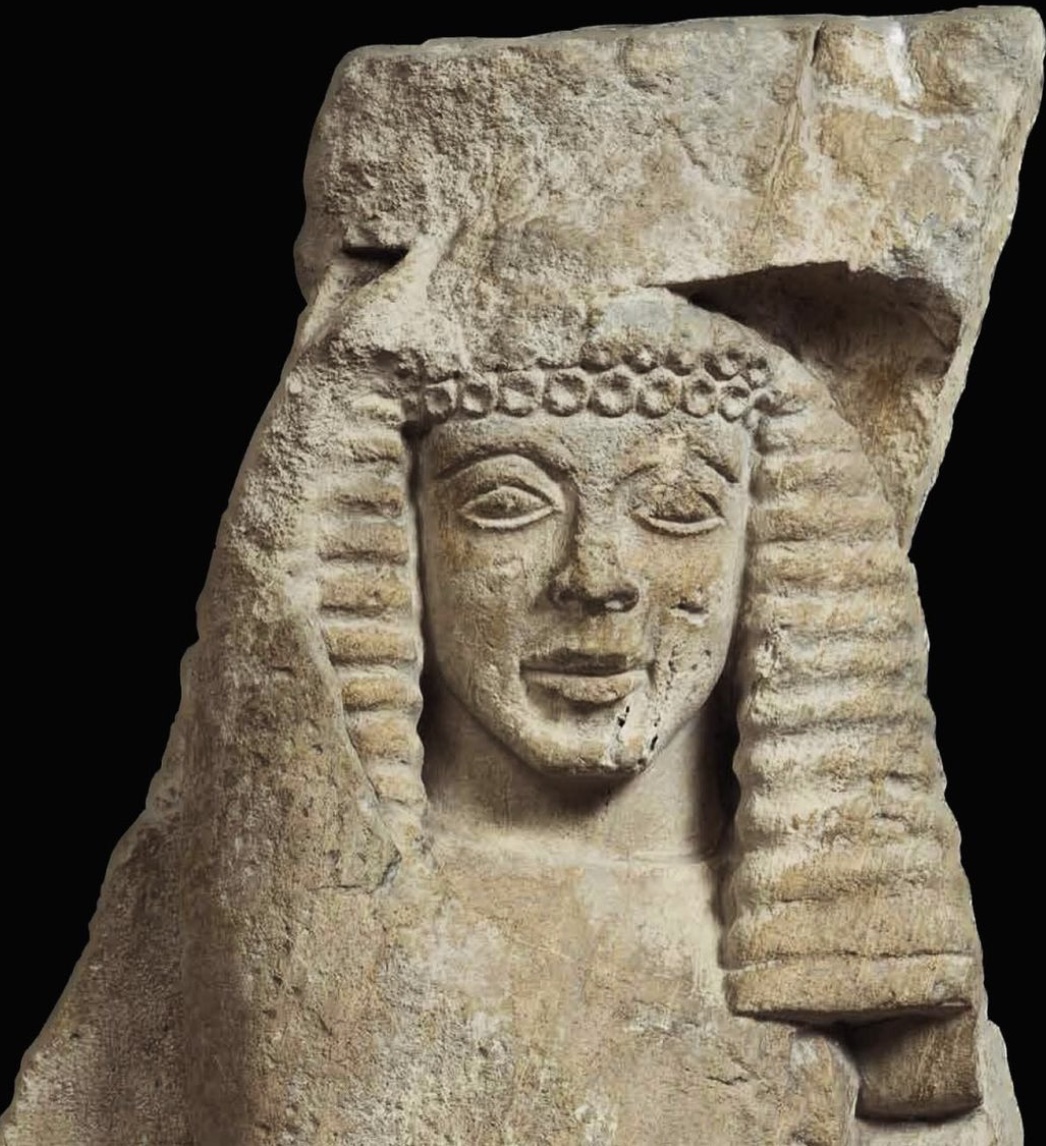This fragmentary lady was unearthed near the citadel of Mycenae in the late 19th century (not by Schliemann, poor guy) and, although she is widely represented in art history textbooks, remains something of an an enigma, sometimes colloquially referred to as the ‘Woman in the Window’.
Her fame is rightly deserved, with that stepped, wig-like hair a wonderful holdover from the of so-called Daedelic style. While the dramatically arched eyebrows and eyelids are conceived of so very plastically, adhered to the face like discrete snakes of modeling clay (opines me, the non artist…), her beguiling half-smile is in my eyes far and away the most successful of the Early Archaic period, interacting so attractively with her cheeks.

The relief is not large (approx. 40 cm tall), and with a smattering of chopped up limbs presumably belonging to neighboring reliefs is generally thought to have decorated a small archaic temple.
With so few fragments from this ensemble of architectural adornment surviving, her gesture is not abundantly obvious (but certainly not peeking out from a curtained window…). My best guess is she is half-veiled, shown revealing her face while maintaining traditional female modesty (demure coquette!) in a climactic moment in the Ancient Greek wedding. In later periods it was a gesture strongly linked to Hera – paradigm for and protectress of young brides.




